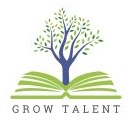We are designed for change – it’s part of our physiological reality. And yet, ‘managing change’ at work can sometimes seem like an uphill struggle.
Is resistance to change something that you’ve experienced in your project or programme? There are many models that explain it and the change equation is one of my favourites.
Creating an equation of change
Why people resist change can take up hours of debating time. There is a nifty little shortcut for understanding what happens at a psychological level when people are affected by change.
C= (AxBxD)>X
C is the change
A is the level of dissatisfaction with the current reality
B is the desirability of the future state
D is the ease with which the change can be implemented
X is the cost of change
The original equation was developed by Richard Beckhart and Reuben Harris based on an idea by David Gleicher (Organization Transitions: Managing complex change (1987) Addison-Wesley, Reading, MA).
Coaching tools can help with change resistance
Timeline Action Planning, one of the tools we outlined in our book 50 Top Tools For Coaching, can be used to help apply the learning from this equation either in group work or working with individuals. Here’s my take on how you could use this tool to help work through change resistance and help people on your programme become change resilient.
Often when we embark on a change programme we start with a compelling vision of the future. In some models of change this compelling vision is the key to moving people from where they are to where we would like them to be. However, from what we know in coaching, often pleasure in the future is not a strong enough motivator to move people to action.
Pain in the present – is it strong enough?
In terms of understanding resistance you first need to understand what their pain is in the present. Getting really clear on the current reality is crucial if you are to help them create a path to the future. What are people dissatisfied with? Are specific interest groups dissatisfied with specific things? Indicators could be surveys, end user feedback, reports. Look for the data that tells you the pain points. And ask people for their take on what’s happening now in the present. If you’re implementing new technology find out what’s a bugbear with the current technology – but be careful not to set an expectation that all will sorted in the future. Unless, of course you can deliver on that.
Once you’re clear on the dissatisfiers, the pain they’re experiencing today, you can compare how the change will alleviate that pain. From here you are able to create a desirable vision of the future. The more you can identify specific pinpoints of relief from the current reality the greater the move towards the change.
Create a roadmap to provide anchors along the way
The next step is working out what the half way point is. What can they expect to see, hear and experience as they move through the change journey. For example, how quickly will things change, when will specific changes be implemented, which bits of the current ways of working will remain which bits will change? What are the practical implications for changes to routines, processes, who they’ll be working with, what they’ll need to know? This half way point helps people gauge how far they’re moving towards the change and creates a sense of certainty.
Once they’ve reached the half way point what will be the obvious next steps to finalise the change? How will the momentum be maintained? What will be the steps to transition to business as usual? Who else needs to be involved now that the change journey is nearing its conclusion?
Look back from the future
Making it easy for people to make the change to the future state reduces the anxiety about the change. Now that you’ve taken them on the whole journey go back to just before the half way point and work out the immediate steps that need to happen to move them from where they are today. If you’ve done your homework these steps will form part of the plan for the change and feed into the wider programme plan: the scope, the priority areas, resources required, communications requirements, milestone planning, deadlines, review mechanisms and so on.
Using the change equation to map out the change journey helps you and those affected understand what’s really behind the resistance and creates certainty and a story around the change.
It’s a good thing to know where people are in the equation – even if it’s telling you that the cost of change is too high for them
The cost of change might not be outweighed by some of the things identified in the timeline action planning. This is a good thing because at least you will know your starting point and why that it is. It will inform your overall strategy for the programme – what’s in or out of scope, how you breakdown the work packages for each aspect of the programme and whether or not you are change ready. It opens up the conversation about change and helps people become more adept at coping with change. Make change resilience your target; that way you allow for the emotional responses to change and help people work their way through them.
Change per se is not what people resist but the impact of the change on them personally.
How do you respond to change? Where are you now with your change programme and where do you want to be?
Want to share your story? Hop over to the Facebook group and start a conversation with likeminded folk.
Be the change you want!
Copyright Ro Gorell 2015 All Rights Reserved.

Recent Comments